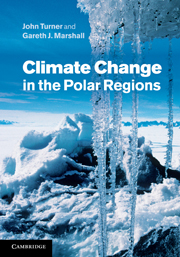Refine listing
Actions for selected content:
2285 results in Ebooks in ecology and environment
3 - Compliance regimes in multilateral environmental agreements
-
-
- Book:
- Promoting Compliance in an Evolving Climate Regime
- Published online:
- 05 January 2012
- Print publication:
- 08 December 2011, pp 55-74
-
- Chapter
- Export citation

Climate Change in the Polar Regions
-
- Published online:
- 07 September 2011
- Print publication:
- 12 May 2011

Engineering Strategies for Greenhouse Gas Mitigation
-
- Published online:
- 07 September 2011
- Print publication:
- 12 May 2011

Pricing Carbon
- The European Union Emissions Trading Scheme
-
- Published online:
- 05 July 2011
- Print publication:
- 28 January 2010
3 - The Next Generation Is Now
-
- Book:
- Ending Dirty Energy Policy
- Published online:
- 05 June 2012
- Print publication:
- 20 June 2011, pp 65-91
-
- Chapter
- Export citation
9 - Conclusion – Strategies for the Energy Future
-
- Book:
- Ending Dirty Energy Policy
- Published online:
- 05 June 2012
- Print publication:
- 20 June 2011, pp 233-244
-
- Chapter
- Export citation
6 - Electricity Future
-
- Book:
- Ending Dirty Energy Policy
- Published online:
- 05 June 2012
- Print publication:
- 20 June 2011, pp 154-183
-
- Chapter
- Export citation
Notes
-
- Book:
- Ending Dirty Energy Policy
- Published online:
- 05 June 2012
- Print publication:
- 20 June 2011, pp 245-304
-
- Chapter
- Export citation
8 - Smart Energy Politics
-
- Book:
- Ending Dirty Energy Policy
- Published online:
- 05 June 2012
- Print publication:
- 20 June 2011, pp 211-232
-
- Chapter
- Export citation
Introduction
-
- Book:
- Ending Dirty Energy Policy
- Published online:
- 05 June 2012
- Print publication:
- 20 June 2011, pp 1-10
-
- Chapter
- Export citation
Contents
-
- Book:
- Ending Dirty Energy Policy
- Published online:
- 05 June 2012
- Print publication:
- 20 June 2011, pp vii-viii
-
- Chapter
- Export citation
7 - Venture Regulation
-
- Book:
- Ending Dirty Energy Policy
- Published online:
- 05 June 2012
- Print publication:
- 20 June 2011, pp 184-210
-
- Chapter
- Export citation
1 - A Regulatory History of Dirty Energy Law and Policy
-
- Book:
- Ending Dirty Energy Policy
- Published online:
- 05 June 2012
- Print publication:
- 20 June 2011, pp 11-42
-
- Chapter
- Export citation
Preface
-
- Book:
- Ending Dirty Energy Policy
- Published online:
- 05 June 2012
- Print publication:
- 20 June 2011, pp ix-x
-
- Chapter
- Export citation
Frontmatter
-
- Book:
- Ending Dirty Energy Policy
- Published online:
- 05 June 2012
- Print publication:
- 20 June 2011, pp i-vi
-
- Chapter
- Export citation
2 - Protectionist Assumptions
-
- Book:
- Ending Dirty Energy Policy
- Published online:
- 05 June 2012
- Print publication:
- 20 June 2011, pp 43-64
-
- Chapter
- Export citation
5 - Fossil Fuel Future
-
- Book:
- Ending Dirty Energy Policy
- Published online:
- 05 June 2012
- Print publication:
- 20 June 2011, pp 121-153
-
- Chapter
- Export citation
4 - Consensus Energy Policy
-
- Book:
- Ending Dirty Energy Policy
- Published online:
- 05 June 2012
- Print publication:
- 20 June 2011, pp 92-120
-
- Chapter
- Export citation
Index
-
- Book:
- Ending Dirty Energy Policy
- Published online:
- 05 June 2012
- Print publication:
- 20 June 2011, pp 305-308
-
- Chapter
- Export citation
4 - Shifting investment to low-carbon choices
-
- Book:
- Climate Policy after Copenhagen
- Published online:
- 05 June 2012
- Print publication:
- 16 June 2011, pp 97-131
-
- Chapter
- Export citation
